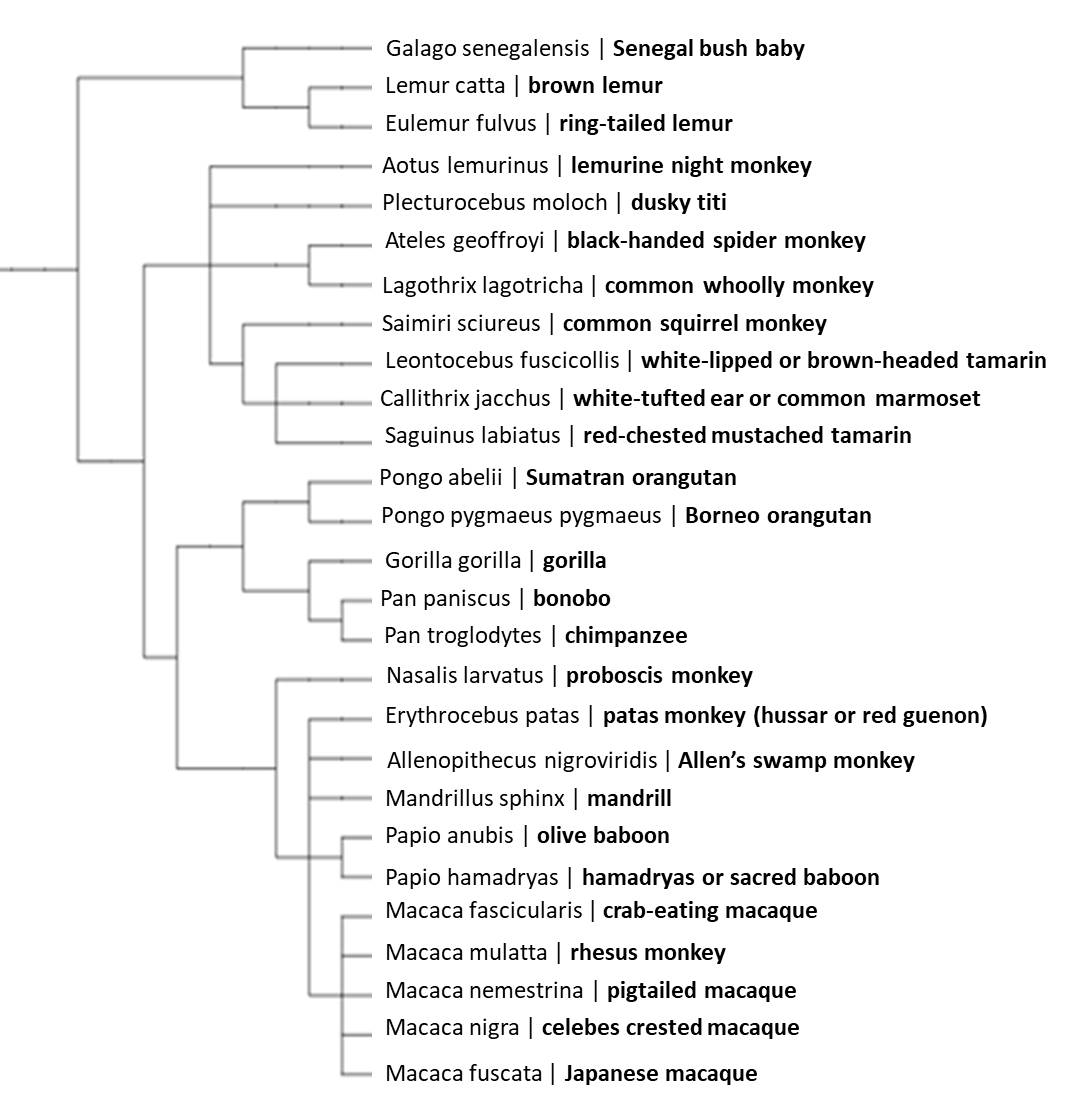NIH supports biomedical research on the nature and behavior of living systems to enhance health, lengthen life, and reduce illness and disability. Because of NIH research, Americans and many others around the world are living longer, healthier lives. However, aging remains the primary risk factor for diseases such as heart disease, neurodegeneration, cancer, and diabetes. Research on aging can involve working with cells in test tubes, computer modeling, animal models, and clinical studies with people. Each approach is important for advancing our knowledge of aging, health and disease. Cells derived from animals have a unique role in research on aging and in understanding how to preserve health in old age. They provide a renewable resource for experimentation into the mechanisms of aging without the need for periodic/repeated collection from living animals.
The non-human primate collection includes cell lines from 27 unique species. Distribution of Non-human primate samples is limited to academic and not-for-profit groups and institutions within the United States. Limitations on the numbers and type of samples may apply. While the cell lines are available free-of-charge, the researcher is responsible for applicable shipping fees.
Please click on the phylogenetic tree species name list below to find samples available from the catalog.
